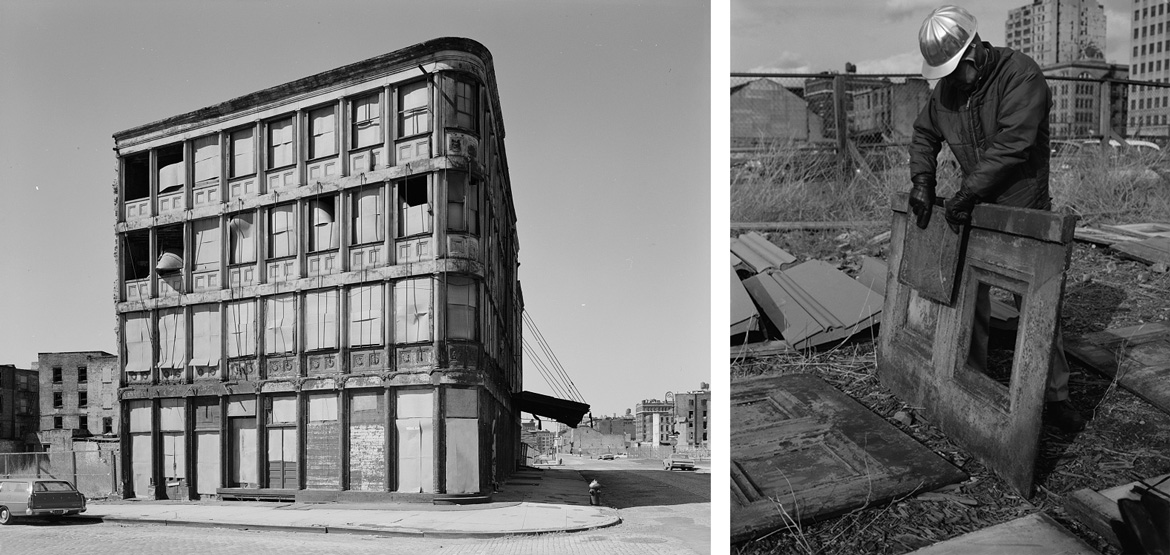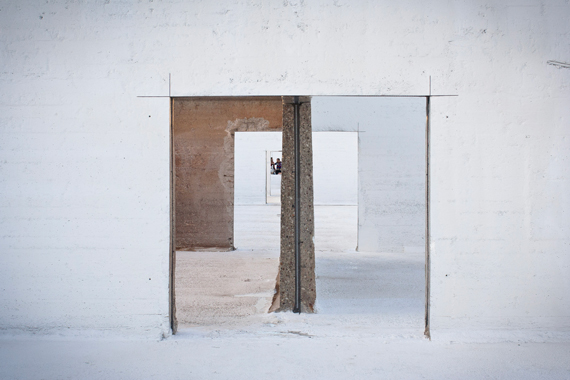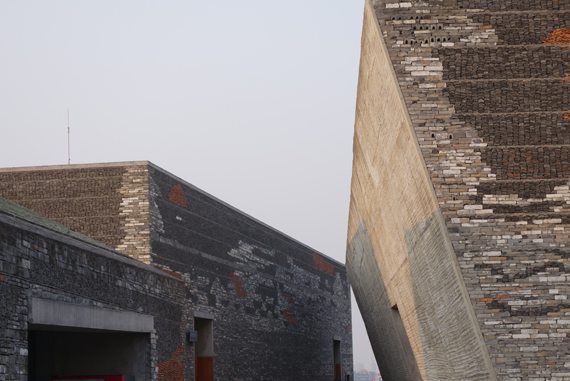
We are celebrating 15 years — and counting — of stories that are deeply researched and deeply felt, that build a historical record of what the city has been.
We are celebrating 15 years — and counting — of stories that are deeply researched and deeply felt, that build a historical record of what the city has been.
The Union Carbide building is coming down. All 52 stories of the modern, Midtown Manhattan skyscraper are at some stage of a transformation into 20 million cubic feet of glass, steel, and concrete, at least some of which is headed to the landfills of New Jersey. Landmarking laments aside, all that raw material begs another question: Could it have served another purpose? Amid calls to put a stop to demolition, Matt Burgermaster argues it is time for architects to take up the work of reuse and reassembly. We are reusing, too! This essay originally appeared in The New York Review of Architecture, a new monthly broadsheet which, true to its name, “reviews architecture in New York.” To see more of their work — commentary on everything from buildings to subway platforms, lectures, and exhibitions — go here. The editors of NYRA also commissioned architect Lane Rick to draw the Union Carbide building at the start of its demolition. For UO, she returned to the truncated tower to further depict a modern ruin that could have been something else.
The demolition of the former Union Carbide building at 270 Park Avenue, depicted at four scales. Drawings by Lane Rick
The largest controlled building demolition in history is currently underway in Midtown Manhattan. The 52 stories of the former Union Carbide building, originally built in 1960, are being taken down one piece at a time. This 1.5 million-square-foot structure, now the headquarters of JPMorgan Chase, will be replaced by a new 2.5 million-square-foot super-tall tower for the same multinational bank. It appears to be a case of a big building that is not big enough.
Union Carbide lived a longer life than most of the world’s 100 tallest buildings to be demolished. At 59 years old, it had been both disparaged as a lesser version of Ludwig Mies van der Rohe’s iconic Seagram Building and lauded as one of several Skidmore, Owings & Merrill-designed towers in Midtown considered to be significant examples of mid-century corporate modernism. It is also a noteworthy design by SOM’s Natalie de Blois — one that she produced in collaboration with, but in the shadow of, Gordon Bunshaft — that deserves proper attribution. The building’s aesthetics and authorship notwithstanding, it is undeniably significant in terms of its raw material — a massive chunk of the city.
The demolition raises questions about the environmental and ethical consequences of this much building material heading to the landfill: about 20 million cubic feet. This whopping statistic is compounded by the irony that JPMorgan Chase undertook a full sustainability and energy efficiency upgrade in 2011, making it the largest renovation project to ever receive a LEED Platinum rating — less than a decade before demolition began. With its demolition now underway, the presence of such waste is difficult to comprehend. Its form is too abstract. Its geography is too diffuse. Its consequences are too long-term. Along with many other, smaller buildings in the city, Union Carbide will become absorbed into the 6 million tons of construction and demolition debris generated in New York City every year. If ever there was a building that could be qualitatively measured in terms of weight alone, it would be this one.
New York is a city whose built environment is characterized by the impermanence of its constituent parts. It is a site of continuous construction — a full-time, full-tilt work in progress — that is seemingly weightless and forever young. Given this fast metabolism, it should come as no surprise that the city has a long history of noteworthy buildings ending up in the dumpster. From the ornamented granite of New York’s original Pennsylvania Station dumped in the swamps of New Jersey to the bespoke bronze facade of the former American Folk Art Museum preserved in the collections storage of the recently renovated Museum of Modern Art, the way buildings die reveals a tension between architecture as a cultural project and a material object. These disembodied structures demonstrate that matter never simply disappears, even if a building’s cultural status as architecture may come and go. Rather, when a demolished building is understood as “matter out of place,” instead of just waste, architectural leftovers can take on different form and meaning through making, remaking, and unmaking. Anthropologist Mary Douglas’ well-known aphorism, published six years after the construction of Union Carbide, continues to remind us that what a society considers waste is but a reflection of its values.[1]
Architecture has the agency to challenge these values. It is one of the key actors in the systems of building production that transform and organize raw matter to produce value. That said, architecture as a “value-added” proposition maintains a myopic investment in the front end of a building’s lifecycle — the initial design phase — that leaves its change over time up to the vicissitudes of money, taste, and weather. Indeed, the success of an architectural project is typically measured by what is added to the world rather than what is removed. As a resource-intensive endeavor enmeshed with the real estate market and construction industry, building is an engine for, and measure of, growth. Newness is seen here as a precondition for architecture’s future-making capacity. Nevertheless, with growing concerns about limited resources and an over-heating planet, this fixation on novelty is counterproductive (and outdated). Today, architecture’s value seems suspended between the uncovering of buried pasts and the anticipation of an uncertain future. To acknowledge that the material residue of human history has not just been temporarily layered upon the earth, but has fundamentally altered our geology and environment, is to recognize the need for alternative design practices that take on the core, existential challenge of remaking what artist Robert Smithson called the “rubble of logic” that 20th-century modernity left behind.
This worldview was predicated upon energy-intensive processes, including demolition, that yielded totemic monuments to progress itself. Union Carbide offers a case in point. It was a building designed and built as a showpiece for a titan of the modern petrochemical industry (the Union Carbide Corporation) that transformed fossil fuels into everything from atomic energy to plastic bags. As we reckon with the entropic future of the Anthropocene, designers of the built environment should help us live with our waste rather than just making more new stuff on an imagined or real tabula rasa. To participate in this transformation, architecture must not only engage in more robust, critical practices of adaptive reuse, renovation, repair, and preservation, but also consider — if not reimagine — demolition.
Unlike obsolescence and ruination, demolition is typically a planned, immediate act of total erasure. Given its ubiquity as a tool for remaking the built environment, shouldn’t architects endeavor to “flip” it from a destructive tool of the market to a productive force of design? Why should building owners and the public have to choose between a pile of rubble and a landmark designation as architecture’s ultimate endgame? Rather than such “all-or-nothing” propositions, can architectural value be determined by what we choose to do with a demolished building’s remains? Such questions can be answered in the affirmative. Architect and writer Keller Easterling has even proposed that building “subtraction” offers a radical alternative to the seemingly innocuous fact that “for architects, a building is the customary answer to most problems.”[2] At risk of getting one’s hands a bit dirty, a broader conception of architecture (and architectural value) as an evolutionary process of formation would include demolition within its scope of work and sphere of influence. This would also require more of a focus on the potentials of building parts rather than building wholes, disassembly rather than demolition, leftovers rather than waste.
We don’t need to look too far for some counterexamples. We may, however, need to look through a different lens — one that sees a building as an assemblage with the capacity for material and cultural shapeshifting. In New York City, James Bogardus’ cast-iron building system was originally intended to be interchangeable and portable, designed to be disassembled and reassembled (not landmarked). Within the canons of modern architecture, we can find that the whitewashed walls of Le Corbusier’s chapel at Ronchamp were built out of leftover rubble from a destroyed neo-Gothic church on the same sacred hilltop. Some contemporary designers also offer compelling evidence that new kinds of practice can be enabled by creative engagement with demolition processes. Today, the Belgian design/deconstruction collective ROTOR and Wang Shu and Lu Wenyu’s Amateur Architecture Studio have developed significant bodies of work that leverage construction processes typically understood to be peripheral to architecture’s field of interest, such as removal, relocation, redistribution, and reassemblage. They not only expand the creative potentials of demolition, but radically detach architecture’s value from a permanent site, fixed building, or singular use type. Such alternative projects and practices suggest we could thus reposition the significance of architecture as an open system of material and cultural exchange extending across broader geographies, lifecycles, and constituencies.
As Union Carbide is taken down this year, its removal should provoke a reevaluation of architectural demolition. It might also inspire a new kind of public imagination that recognizes the unmaking of our built environment to be a part of its making — one that considers building leftovers as the building blocks of its future. Instead of treating architectural waste as ruins without a future, such a project imagines this rubble differently — as parts of incomplete wholes, in the process of being continuously and collectively transformed, but never finished.
A version of this essay first appeared in the New York Review of Architecture.
Mary Douglas, Purity and Danger: An Analysis of Concepts of Pollution and Taboo (New York: Routledge, 2000), 36.
Keller Easterling, Subtraction (Berlin: Sternberg Press, 2014), 7.
The views expressed here are those of the authors only and do not reflect the position of The Architectural League of New York.


